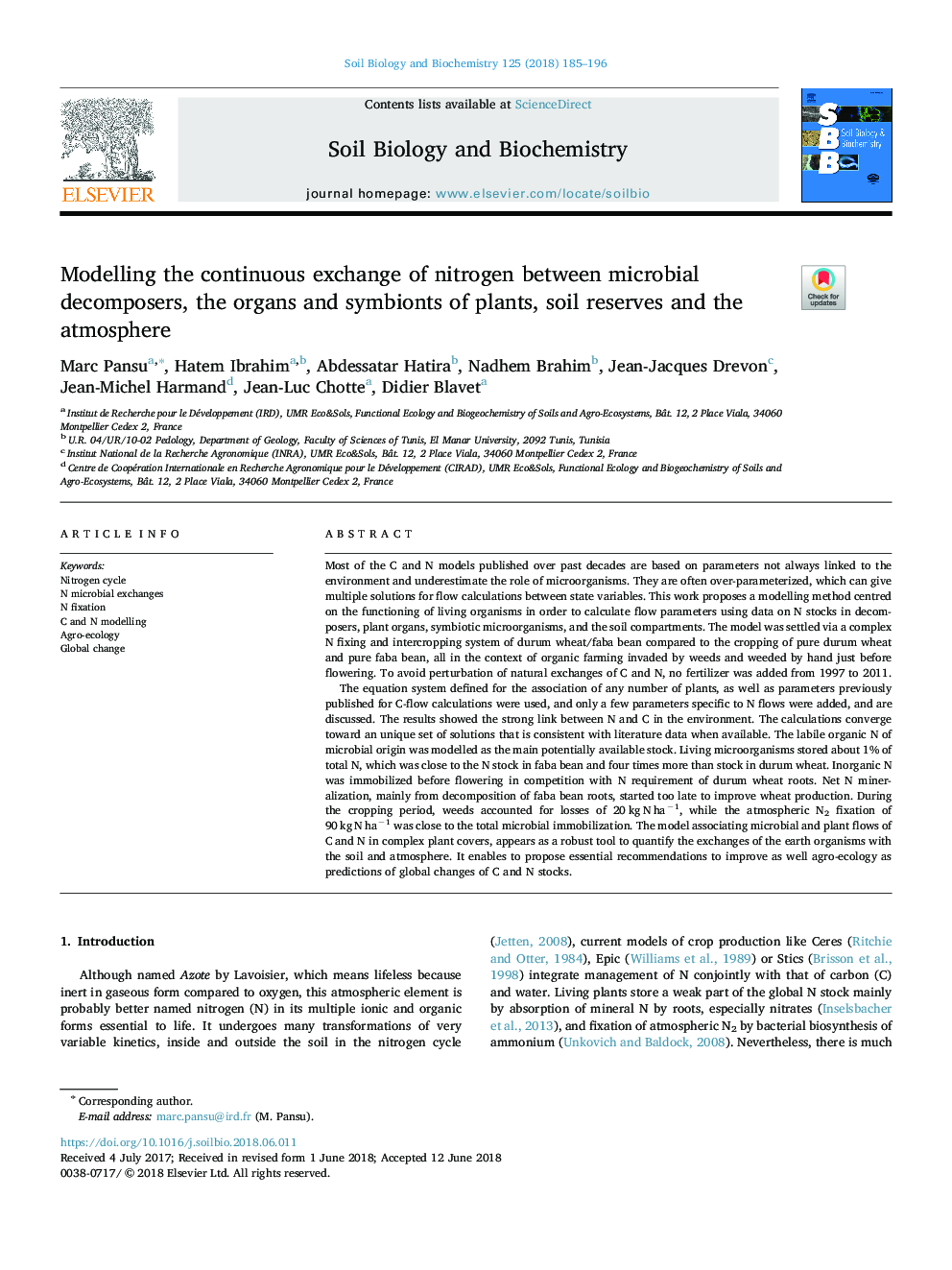| Article ID | Journal | Published Year | Pages | File Type |
|---|---|---|---|---|
| 8362467 | Soil Biology and Biochemistry | 2018 | 12 Pages |
Abstract
The equation system defined for the association of any number of plants, as well as parameters previously published for C-flow calculations were used, and only a few parameters specific to N flows were added, and are discussed. The results showed the strong link between N and C in the environment. The calculations converge toward an unique set of solutions that is consistent with literature data when available. The labile organic N of microbial origin was modelled as the main potentially available stock. Living microorganisms stored about 1% of total N, which was close to the N stock in faba bean and four times more than stock in durum wheat. Inorganic N was immobilized before flowering in competition with N requirement of durum wheat roots. Net N mineralization, mainly from decomposition of faba bean roots, started too late to improve wheat production. During the cropping period, weeds accounted for losses of 20â¯kgâ¯Nâ¯haâ1, while the atmospheric N2 fixation of 90â¯kgâ¯Nâ¯haâ1 was close to the total microbial immobilization. The model associating microbial and plant flows of C and N in complex plant covers, appears as a robust tool to quantify the exchanges of the earth organisms with the soil and atmosphere. It enables to propose essential recommendations to improve as well agro-ecology as predictions of global changes of C and N stocks.
Related Topics
Life Sciences
Agricultural and Biological Sciences
Soil Science
Authors
Marc Pansu, Hatem Ibrahim, Abdessatar Hatira, Nadhem Brahim, Jean-Jacques Drevon, Jean-Michel Harmand, Jean-Luc Chotte, Didier Blavet,
